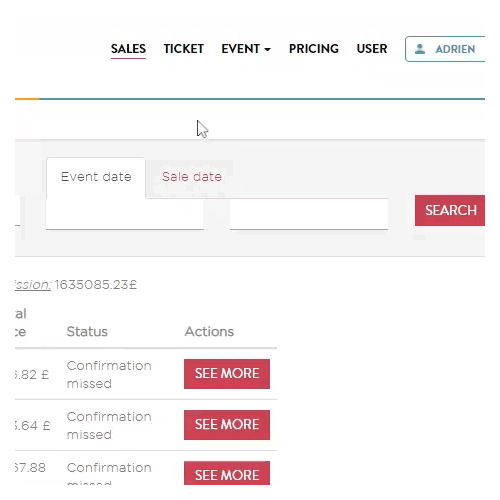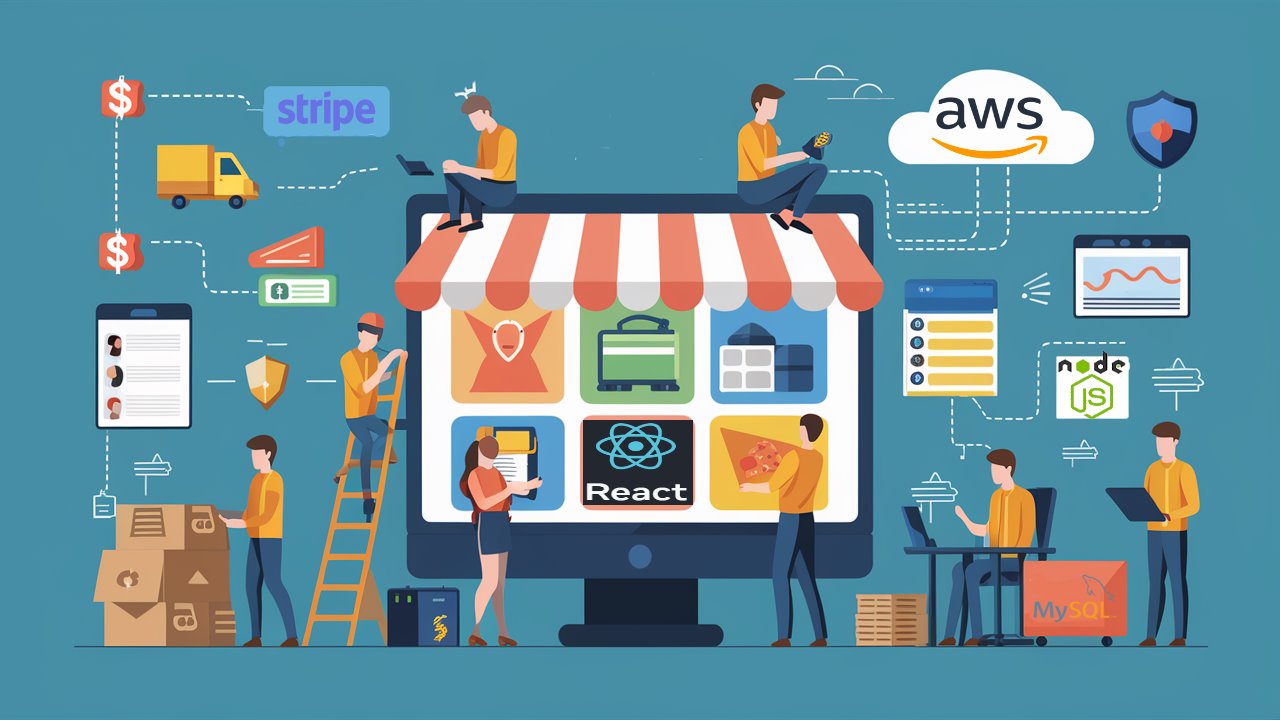Previously, we shared some powerful growth strategies to scale an online marketplace – after it has reached product-market fit. But such explosive exponential growth requires a suitable foundation to support it – a platform infrastructure built for scalability. One that can seamlessly handle surges in traffic and transactions without compromising performance or user experience.
In this post we first explore the nature of scalable growth and why online marketplaces are so good at it. We’ll then delve into strategies for building a scalable platform and the critical role of flexibility in executing those strategies.

Growth vs Scaling
Growth is often seen as a linear progression: a company adds more resources like manpower, capital, or technology, leading to an incremental increase in revenue. Scaling, on the other hand, is a paradigm shift. It’s about amplifying revenue without a significant rise in resource investment.
Let’s break it down with an analogy: imagine scaling a mountain. Incremental growth is like steadily climbing the mountain, adding more gear and supplies (resources) at each step. Scaling, however, is like finding a hidden cable car (efficient technology) that propels you to the summit with minimal effort.
Scalability is in the DNA of the Marketplace Model
Online marketplaces excel at scalable growth, because of their inherent efficiency. If built the right way, the core functionalities – product listings, search capabilities, and payment processing – can serve a growing user base without significant additional investment.
Network Effects are probably the most powerful drivers of marketplace scalability. They occur when every new seller or buyer adds additional value to the platform without requiring a proportional increase in marketplace infrastructure or support staff. These feedback loops between buyers and sellers get more potent as the marketplace grows, attracting even more users.
Another factor that contributes to the marketplace model’s eminent scalability is the limited need for inventory management. Unlike traditional stores, online marketplaces don’t hold their own inventory. They connect buyers with sellers, so the sellers usually handle storage, packaging, and shipping*. This frees up the marketplace to focus on attracting sellers and buyers, allowing for easier scaling.
* There is a trend towards highly-managed marketplaces, such as Amazon, that look after the entire fulfilment lifecycle (order management, warehousing, packing, shipping, returns) in order to add additional value for sellers and offer better customer service to buyers. This will of course have an impact on which aspects of your infrastructure needs scaling as we discuss in this post on marketplace shipping strategies.
Building a Roadmap for Scalable Growth
So, how do you create a foundation for scalable growth in your online marketplace? Here’s are five aspects to consider:
1. Laying the Foundation: Choose the Right Tech Stack
The foundation of your marketplace scalability is its technological backbone – the tech stack. Opting for a scalable tech stack paves the way for future growth. This means choosing technologies that can handle increasing traffic volumes, data loads, and complex functionalities.
Popular choices include cloud-based infrastructure solutions like Amazon Web Services (AWS) or Google Cloud Platform (GCP) for their elasticity and ability to scale resources on demand. For backend development, consider frameworks designed for scalability like Node.js, which is great at handling high-volume concurrent requests.
A relevant example can be found in the experience of Affordable Art Fair, an art marketplace. They had to replace their Magento architecture since it was difficult to customise, almost impossible to scale, and the slow site speed hurt the user experience. Their new platform foundation utilised technologies, such as React (frontend), Symfony (backend), and AWS (cloud servers with Elastic Beanstalk and load balancers), known for their scalability, extensibility, and stability. This upgrade made a huge difference to the platform’s performance and contributed to a 50% increase in turnover.
In a addition to the above infrastructure ‘bones’ there a variety of performance-enhancing tools that can be deployed to support its scalability:
- Redis is an open-source in-memory data storage solution that speeds up response times. It is very useful for real-time applications like online gaming, stock trading, and media streaming, all which need to handle millions of requests per second.
- Envoy provides an infrastructure layer (‘service mesh’) to monitor and manage communication between microservices. Used by Lyft.
- Varnish is an open-source proxy that increases page load speed by reducing the number of HTTP requests that have to be processed by the main server. Used by Deliveroo.
2. Embrace Microservices Architecture
Break down your marketplace’s functionalities into independent, self-contained services aka microservices. This allows for independent scaling of each service – you can scale up the payment processing component without affecting the product search functionality, for example. This modularity also simplifies development and maintenance, making your platform more agile and resilient.
3. Design for Efficiency
From the user interface (UI) to the underlying database architecture, strive for efficiency. Optimise code for performance, utilise caching mechanisms to reduce database load, and design an intuitive UI that minimises user clicks and ensures a smooth buying experience. A well-designed user experience encourages users to return and transact more frequently, further fueling your scalable growth.
Parking marketplace, MobyPark, wanted to make sure customers didn’t get lost, since car park lists and maps didn’t provide the same information. They built a user interface that integrated lists and maps into a much more user-friendly navigation tool.
4. Prioritise Automation
Automation is your friend in a scalable marketplace. By the time that your marketplace has reached product-market fit, core functionalities such as payment and order flows should be automated. Payment service providers like Stripe offer comprehensive features that can accommodate almost any payment flow, with the help of an integration expert of course😉
For example, FanPass, a marketplace for event tickets, used Stripe Connect to automate their complex payment flow, which includes buyer payments, seller payouts, refunds, as well as a variable commission structure.

The next step is to automate recurring tasks such as sending notifications, generating reports, and managing user accounts. This frees up your team to focus on strategic initiatives and user experience improvement, maximising your resources.
MobyPark, the parking marketplace example we used above, implemented a whole range of advanced automated features:
- Auto-updated fee calculation: An advanced search feature automatically updates the fee calculation based on search preferences such as facilities, booking period and location.
- Seller quality control: A predictive notification system and progress bar provide car park owners with assistance on how to complete their profiles and how to assist drivers.
- Automated parking access: Axible, an IoT connectivity integrator, generates a code and shares it with customers on the app when they book a parking slot. This gives them access to car park entrances.
- Alerts for open parking spaces: Many drivers organise their train or airplane trips in advance, so they usually know exactly which parking location they are looking for. We implemented a notification system which notified them of new availability if they didn’t find what they were looking for the first time.
- Automated pricing system: An airline-style yield management system was integrated with the search feature. Its algorithm prioritises a list of variables, including booking period, availability, day of the week, and special offers, to optimise conversions and revenue.
5. Invest in Security
Scalability shouldn’t come at the expense of security. With a growing user base and potentially larger transaction volumes, your platform becomes a target for malicious actors. Implement robust security measures with regular penetration testing and vulnerability management to ensure a secure marketplace environment.
There are number of tools that can be integrated into your marketplace to enhance its security and protect users as well as your brand:
- PerimeterX detects and manages automated attacks.
- Sift uses machine learning to block account takeovers and payment fraud.
- Forter protects against identity theft and fake accounts.
- Stripe Radar detects fraud patterns and flags risky transactions.
The Power of Flexibility: The Case for Custom Solutions
Off-the-shelf marketplace solutions might seem attractive for their speed and affordability. However, they often lack the flexibility needed for long-term scalability. Pre-built solutions therefore often struggle to accommodate the unique needs of users. This can lead to dead ends – scenarios where your platform can’t evolve to meet the demands of your growing user base.
The alternative. investing in a custom solution, may require higher upfront costs, but offers unmatched flexibility. You can tailor the platform to the specific needs of your users and business model.
This customisability ensures your marketplace can adapt and scale organically, evolving alongside your user base and market demands. The process of iteration that’s usually built into a custom development process, allows you to continually improve your marketplace based on user feedback and data, which also helps to set the platform up for scalable growth.
Scalable Growth is a Journey, Not a Destination
It is important to understand that scalable growth is an ongoing process, not a one-time achievement. Continuously monitor your marketplace platform’s performance, analyse user behaviour, and implement data-driven strategies for further optimisation.
The simple truth is, marketplace startups that are prepared to adapt their approach as market trends change and their user base evolves, have the best shot at sustaining an exponential growth trajectory.
